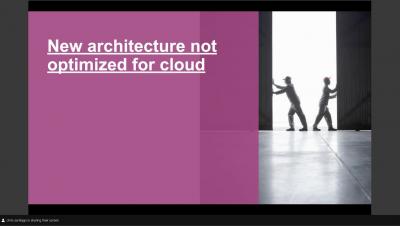Systems | Development | Analytics | API | Testing
%term
Re-thinking The Insurance Industry In Real-Time To Cope With Pandemic-scale Disruption
The Insurance industry is in uncharted waters and COVID-19 has taken us where no algorithm has gone before. Today’s models, norms, and averages are being re-written on the fly, with insurers forced to cope with the inevitable conflict between old standards and the new normal.
Understanding Snowflake's Resource Optimization Capabilities
The only certainty in today’s world is change. And nowhere is that more apparent than in the way organizations consume data. A typical company might have thousands of analysts and business users accessing dashboards daily, hundreds of data scientists building and training models, and a large team of data engineers designing and running data pipelines. Each of these workloads has distinct compute and storage needs, and those needs can change significantly from hour to hour and day to day.
Waterfall Chart
It’s time, again, to look at a chart that you might not be using, but that you definitively should consider using when doing data visualization. The waterfall chart is great at visualizing the cumulative effect from positive and negative changes, as, for example, you would see in a Profit and Loss (P&L) report.
Welcome to data fabric - the architecture of the future
On average, data-driven companies grow more than 30% every year. Because of the competitive advantage that data confers to incumbents who are capable of extracting value from it, it has been called the new oil. Companies are tapping into this well of resources because of the advantages that it has to offer: But using data to run your operations poses its own set of challenges.
Test Automation 101
Every company is a digital company. Whether you are a traditional e-commerce company who has been selling goods online for years, a healthcare company who recently needed to accelerate online visits for telehealth, or a company whose business model has drastically shifted due to Covid, the need for digital transformation is here.
APIs 101: Everything you need to know about API design
Application programming interfaces, or APIs, are how software talks to other software. They abstract the complexity of underlying systems so the systems can connect in novel ways even if they were never intended to interoperate. Consequently, APIs are key ingredients in both most modern digital experiences and the execution of many of today’s most exciting business opportunities.











